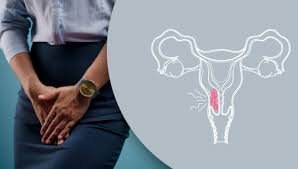Endometrial cancer is a type of cancer that begins in the lining of the uterus, known as the endometrium. It is one of the most common cancers affecting the female reproductive system. Understanding its causes, symptoms, diagnosis, and treatment can help in early detection and better management.
Causes and Risk Factors
The exact cause of endometrial cancer is not fully understood, but several risk factors have been identified:
- Age: It most commonly affects women over the age of 50.
- Hormone Levels: Increased levels of estrogen without corresponding progesterone can lead to endometrial cancer.
- Obesity: Excess fat tissue can increase estrogen levels, raising the risk.
- Reproductive History: Never having been pregnant can increase risk.
- Menstrual History: Early menstruation or late menopause can extend exposure to estrogen.
- Family History: A family history of endometrial or colorectal cancer can increase risk.
- Genetic Conditions: Conditions like Lynch syndrome can also raise the risk.
Symptoms
The most common symptom of endometrial cancer is abnormal vaginal bleeding, especially after menopause. Other symptoms include:
- Pelvic pain or cramping
- A watery or blood-tinged discharge
- Pain during intercourse
- Unintended weight loss
Diagnosis
To diagnose endometrial cancer, doctors may use several methods:
- Pelvic Examination: A physical exam to check the uterus, ovaries, and other organs.
- Ultrasound: Imaging to get a detailed view of the uterus.
- Endometrial Biopsy: A procedure to take a sample of the endometrial tissue for analysis.
- Hysteroscopy: Using a camera to look inside the uterus and take tissue samples.
- Dilation and Curettage (D&C): A more extensive procedure to obtain endometrial tissue.
Staging
Once diagnosed, the cancer is staged to determine its extent:
- Stage I: Confined to the uterus.
- Stage II: Spread to the cervix.
- Stage III: Spread beyond the uterus but within the pelvic region.
- Stage IV: Spread to distant organs.
Treatment
Treatment for endometrial cancer depends on the stage and may include:
- Surgery: The most common treatment, often involving a hysterectomy (removal of the uterus), and sometimes the removal of the ovaries and fallopian tubes.
- Radiation Therapy: Used to kill cancer cells or shrink tumors.
- Hormone Therapy: Used to block hormones that fuel cancer growth, especially in advanced stages.
- Chemotherapy: Utilizes drugs to kill cancer cells, often used when cancer has spread.
- Targeted Therapy: Uses drugs that target specific aspects of cancer cells.
Prevention and Monitoring
Preventive measures can lower the risk of endometrial cancer:
- Maintaining a healthy weight
- Regular exercise
- Managing conditions like diabetes and high blood pressure
- Using oral contraceptives (which may reduce risk)
- Regular check-ups, especially for those with a family history or other risk factors
Conclusion
Endometrial cancer is a serious condition but often curable when detected early. Awareness of symptoms, regular medical check-ups, and understanding risk factors can significantly improve outcomes. If you experience any symptoms or fall into high-risk categories, consult a healthcare professional promptly.


